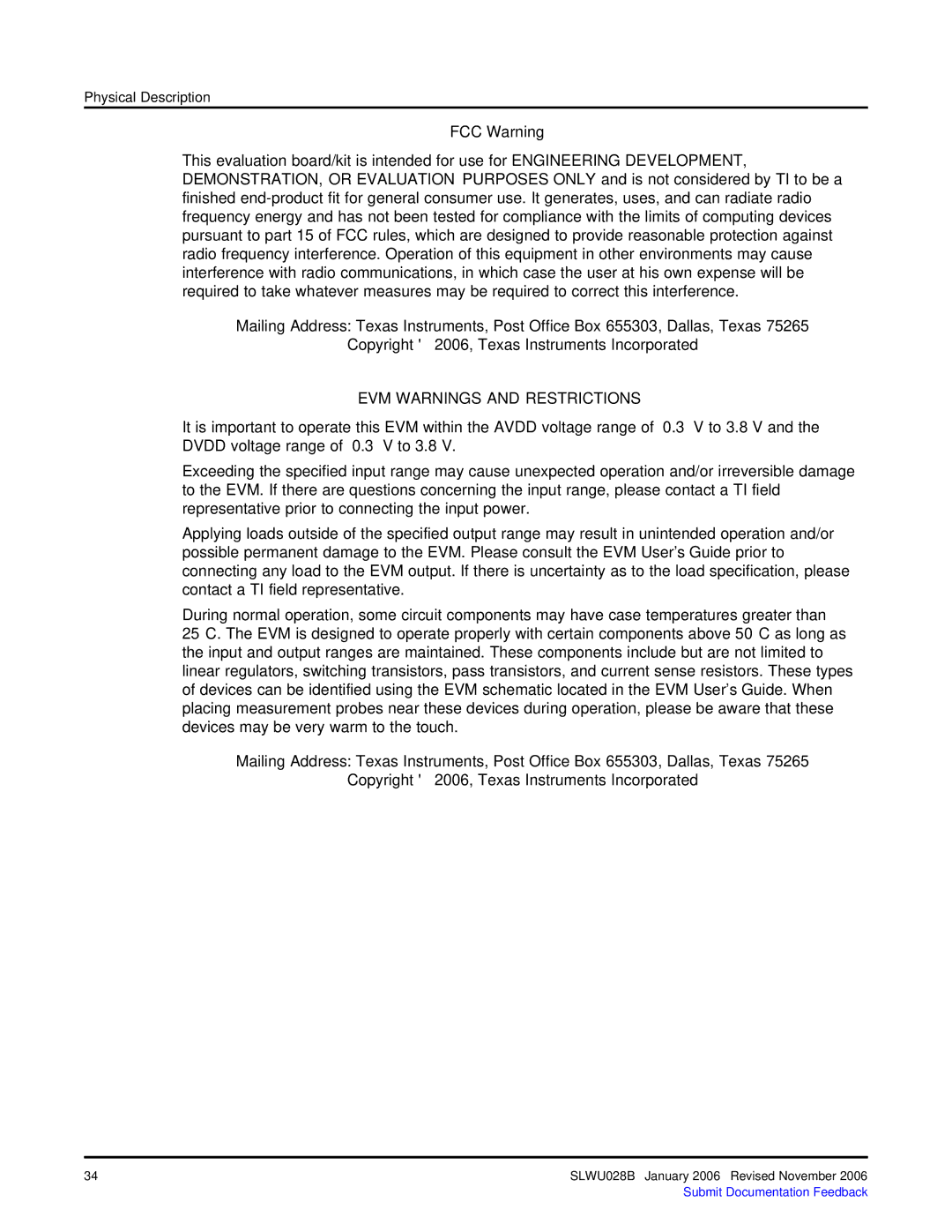ADS5525, 27, 47, 45, 46 specifications
Texas Instruments is a leader in the field of analog and mixed-signal semiconductors and offers a diverse portfolio of high-performance products. Among its notable offerings are the ADCs (Analog-to-Digital Converters) such as the TI 46, 45, 47, 27, and the ADS5525. These devices are engineered to meet the demanding requirements of various applications, including communications, industrial, and medical systems.The Texas Instruments 46 series ADCs are recognized for their high speed and precision. They utilize a 14-bit architecture with sampling rates of up to 1.5 GSPS, which makes them ideal for high-frequency applications such as communications and instrumentation. One of the key features is their ability to support a wide input bandwidth, which allows for accurate conversions of high-frequency signals.
The 45 series, similar in architecture, excels in environments where power efficiency is paramount. These ADCs are designed to consume less power while maintaining high performance. They offer a flexible sampling rate, providing options for both lower and higher intensity applications. This versatility is essential for handheld and portable devices where battery life is crucial.
Moving on to the 47 family, these devices focus on achieving high dynamic range and low distortion. Their architecture includes sophisticated digital filter options, enhancing the capability of noise reduction and signal integrity. With an impressive signal-to-noise ratio, the 47 series finds its usage in systems where performance cannot be compromised, such as high-end audio and video applications.
The 27 series ADCs provide an excellent combination of high performance and low latency, making them suitable for real-time analysis in various scenarios. They are equipped with advanced data acquisition features and can communicate seamlessly with modern digital signal processors and microcontrollers.
Finally, the ADS5525 is a standout in the lineup, offering a 12-bit resolution at a maximum sampling rate of 125 MSPS. This device is designed for a range of applications, including medical imaging and ultrasound systems. It boasts features such as an integrated digital filter and multiple power-saving modes, making it versatile and efficient in terms of energy consumption.
In summary, Texas Instruments' ADC lineup, including the 46, 45, 47, 27, and ADS5525, offers numerous features and technologies, catering to a wide range of applications through their respective specifications of speed, power efficiency, dynamic range, and ease of integration. These devices illustrate Texas Instruments' commitment to providing innovative solutions in the analog and mixed-signal domain.

